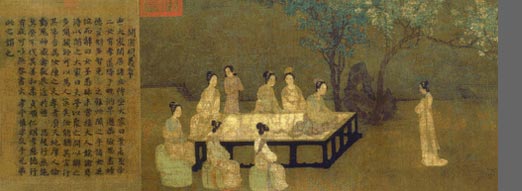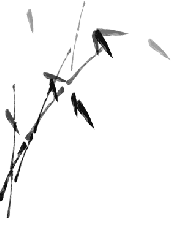| | |
Paifang: an architectural form unique to China, carries many Chinese cultural facts under its splendid design.
Paifang, also called Pailou, is an architectural form that is uniquely Chinese. It is an archway usually made of fine wood or stone, and painted or ornamented with glazed tiles. Calligraphers are usually requested to write moral inscriptions that are carved onto the middle beam.
These structures usually stand in downtown areas, or at the entrances of mausoleums, temples, bridges and parks.
Functions
The Paifang is erected in memory of virtuous people making it one form of memorial architecture, although it can also be built to function as mere decoration.
Cultural facts
In feudal times, the inscriptions carved on the beams of the Paifang reflected the people's life aspirations.
Building the Paifang was an important folk ritual in feudal society. The event that marked the erecting of the Paifang was considered very solemn. Ceremonies expressing praise, honor, prayer, commemoration, or blessing were performed.
The completed structure is a perfect representation of the harmony between ancient Chinese architectural modeling art and sculpting art, both of which enjoy long histories and have great artistic value.
The structure also mirrors feudal ethics and traditional norms in ancient China. It acted as a physical manifestation of those ethics and norms. Various Paifangs, such as chastity Paifang (exclusively for widows), loyalty Paifang and filial piety Paifang, were set up to give honor to the deserving.
Paifang witnesses history. Many a Paifang was built to commemorate historical events and important historic figures, giving those structures great significance in the study of Chinese history.
Paifang has long become a symbol of China. It is valued for its rich connotations and unique art form. It is also a silent evidence of China's ancient customs, China's ancient values, and China's long-winding history.
Fengshui: a unique practice in Chinese architectural culture which is deeply rooted in the Chinese belief of balancing opposing forces to achieve harmony.
Fengshui, a special Chinese tradition in architecture, usually links the whole process from site selection, designing, construction and interior and exterior decorating in ancient times. Feng means wind and shui is water.
Fengshui combines the trinity of the Heaven, the Earth and humans, and seeks harmony between selected site, orienting, natural doctrine and human fate. It repulses human destruction of nature and stresses cohabitation with the environment, which is regarded as perfect and occult. In China, a fengshui practitioner, or a diviner, usually applies theories as Yingyang, Sixiang, Wuxing and Bagua, based on the principle of the Heaven and the Earth in harmony, to select an optimum place for burial site or accommodation.
Qi, deemed as the basic element of the physical world in ancient Chinese philosophy, is the essence of fengshui. The art of fengshui advocates there is a certain field, sort of like magnetic field, termed as qi field. An auspicious qi field is what fengshui practitioners seek while an evil one is what they strive to avoid. There are five elements - long (dragon), xue (cave), sha (sand), shui (water) and xiang (orientation). They are used to avoid evil qi and gain auspicious qi. In order to keep qi of the Heaven and the Earth in harmony in the construction of a new structure, earth vein should not be spoiled. The best orientation is a building with its face facing a river or a lake in the south and back against a hill in the north.
Most ancient cities in China were built under guidance of fengshui, which was the main principle used to select locations based on their environmental surroundings. Fengshui helps to plan placement of structures of significance and confirm the location of city central axis. Usually the central axis of a city, or certain other architectural complex, ought to face certain peak of mountains nearby to make the city magnificent and solemn. For example, the Imperial Palace in Beijing was placed on the very center of the city, and its central axis points at Jingshan Mountain which was called Guard Mountain of the Palace.
Fengshui practitioners also emphasize pagodas and their site location since pagodas are believed capable of protecting residents around them.
Although there are still many people who believe it, many people now doubt this theory.
 Features: Features:
Ppresent Chinese timber framework and painting which are basic characteristics of Chinese architecture.
 Architecture Styles: Architecture Styles:
feature characteristics and charms of: Imperial architecture, Religious architecture (Taoist, Buddhist), Garden architecture and General architecture(Hutong ,Siheyuan).
 Architectural Culture: Architectural Culture:
There is always deep relation between Architecture and Culture: It is certain you will learn some cultural facts in so-called Architectural culture in Fengshui and so-called Cultural architecture in Paifang.
Most contents of this topic is from: http://www.travelchinaguide.com
More information, please visit the relative topic of travelchinaguide.com
Edit by Jason
|

